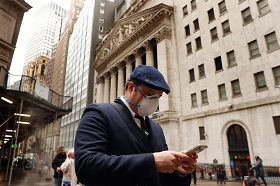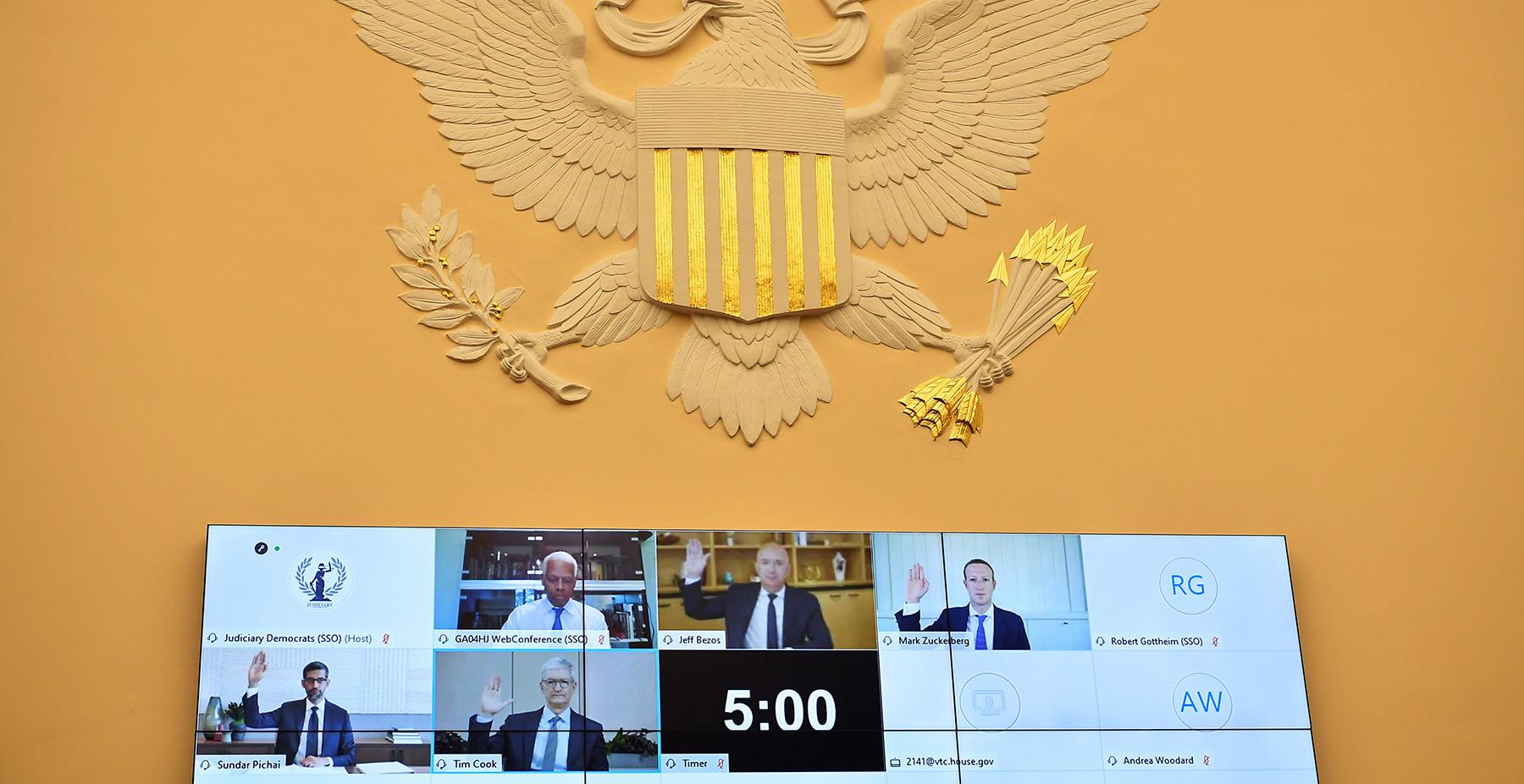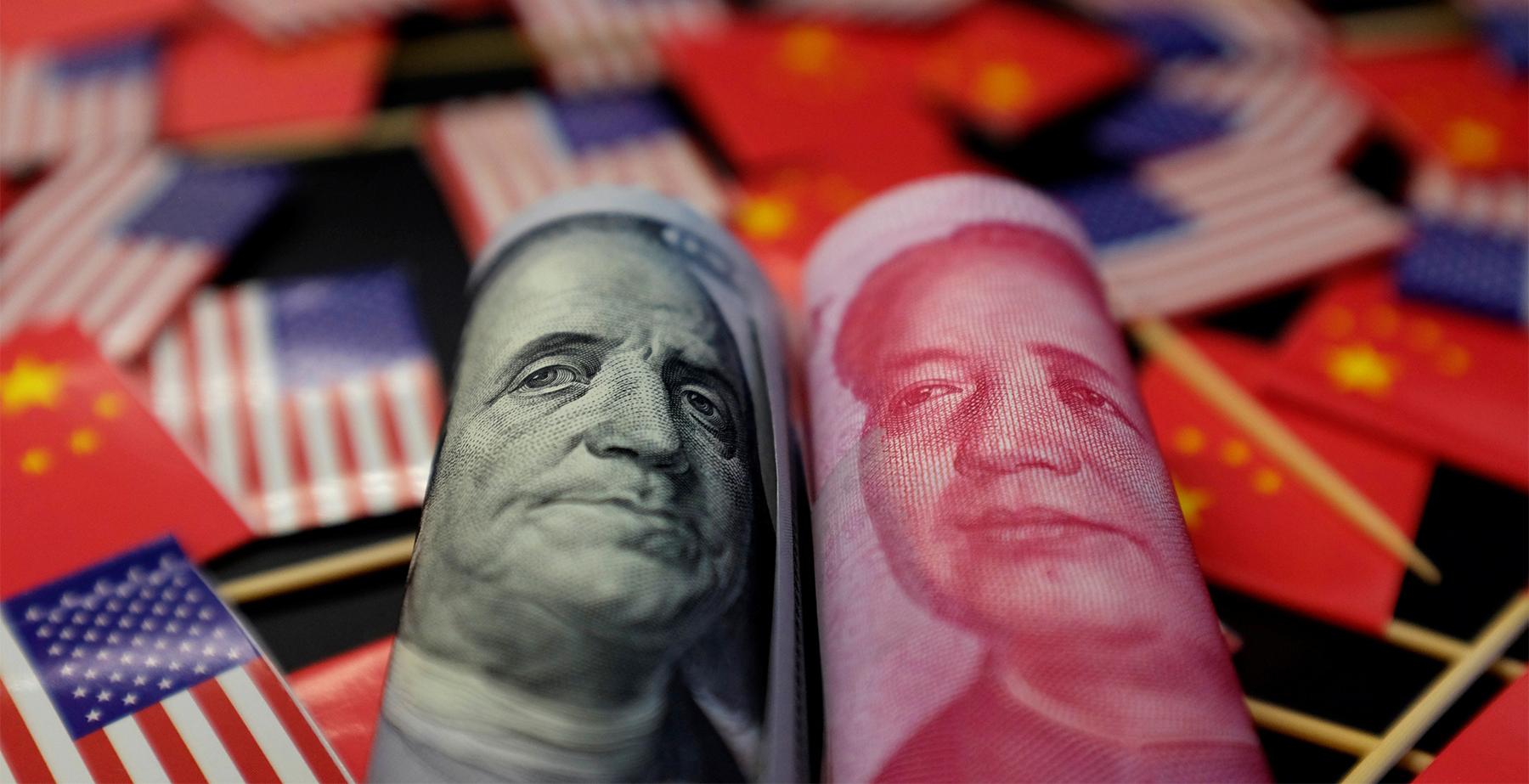Constant presence of the largest U.S. banks within the sight of the global regulator of financial markets, represented by the FSB, serves as an additional guarantee of their solvency. And, finally, the third and, perhaps the most important factor of the U.S. financial sector’s stability is the Federal Reserve System. It is formed at the expense of private commercial banks, members of the Fed. This fundamentally distinguishes America’s banking model from the European and Asian models, where central banks are totally or partially owned by the government.
This degree of independence makes the Fed the most powerful private corporation in the world, especially given the fact that it has the exclusive right to produce the most sought-after commodity in the world – the U.S. dollar.
Given the increasing geopolitical tensions and global macroeconomic risks, it is difficult to predict the development of the U.S. stock market this year. With the market up just over 1 percent in the first five days of 2023, the probability that the year will be positive is more than 80 percent – at least according to the five-day rule.
To be sure, today the Fed faces the daunting challenge of taming inflation without allowing the economy to slide into recession or stagflation. There is a possibility that the price of economic stabilization could be a correction in the U.S. stock market toward an even greater decline in the value of traded financial instruments. However, as long as the world economy retains faith in the omnipotence of the U.S. dollar as the commodity in highest demand, the internal costs for the American economy will be offset by profits in foreign markets, providing the U.S. financial system with relative stability. Therefore, the answer to the question about the likelihood of and causes for a new financial crisis in the U.S. should be sought outside the U.S. financial system.
The March collapse of three major U.S. banks—Signature Bank, Silicon Valley Bank (SVB) and Silvergate Capital—coupled with a sharp decline in the market value of Wall Street financial titans, such as JPMorgan Chase, Bank of America, Citigroup and Wells Fargo, triggered a lively discussion in the expert community about another financial crisis looming in the United States. While the former incident was triggered by runaway depositors doubting the solvency of the banks, whose assets are linked to the funding of hi-tech start-ups in the Silicon Valley, the latter has most likely been driven by fears of investors over excessive accumulation of the toxic government bonds in the portfolios of too big to fail U.S. financial institutions, whose yields fell sharply after successive increases of the key interest rate by the Federal Reserve in a drive against inflation. How vulnerable is the U.S. financial system to the risks of venture capital financing and the tightening of regulatory monetary policies? To answer this question, it is necessary to take a closer look at the specifics of the U.S. financial sector.
The main difference between the U.S. financial model and that of other countries is that the former is focused on business financing through exchange-traded instruments rather than on bank loans. For example, U.S. companies use corporate bonds to cover three quarters of their need for borrowings, which is three times higher than in the 27 EU member states.
The U.S. financial sector is extremely diversified. Along with banks, major institutional investors include pension savings funds, mutual investment funds and insurance companies. The share of banks in total U.S. financial assets is relatively small – 22.5 percent, as compared to 47.3 percent in Germany and 56.5 percent in France. Asset concentration in the U.S. banking system is the lowest among the most developed banking centers. Thus, in 2021, assets of the five largest banks as a share of total commercial bank assets were: 49.7% in the U.S., 59.9% in the UK, 63.6% in Japan, 78.5% in France, 84.2% in Switzerland and 94.3% in Germany. Thus, in terms of asset concentration, risks of a collapse in the U.S. banking system are lower than in other most developed economies.
Another issue is the quality of assets in bank portfolios. The U.S. has a particularly strict accounting rule, known as mark to market revaluation of assets. This rule requires financial institutions to reconcile the book value of assets they possess with their current market value. The lower the market value of assets falls, the more Tier 1 capital (shareholders’ equity plus reserves) the bank must accumulate. The problem is that it is quite difficult to build up capital in a short period of time, especially when the market is on the rise and all liquid funds are invested in various financial instruments. Critical in this regard are the balance sheets of the so-called too big to fail banks due to their cross-ownership of each other’s assets. Failure to implement the asset revaluation rule by too big to fail banks can quickly cause a “domino effect”, as we witnessed in 2008 after the bankruptcy of Lehman Brothers, when not only U.S. banks, but banks closely related to them in other countries being also affected.
Since then, global systemically important banks (G-SIBs) have been on the radar of the Financial Stability Board (FSB), a special international institution created by the G20 in 2009 to coordinate national financial regulators and responsible for financial sector compliance with international codes and standards. Every November, the FSB updates the list of G-SIBs. Currently, this list contains 30 banks, including 8 U.S. banks. The banks are divided into five groups based on their exposure to financial losses: the first is the lowest risk while the fifth is the highest. JPMorgan Chase, Bank of America and Citigroup occupy the top three positions in the list, which means they are among the most risk prone institutions in the world, with Wells Fargo rounding out the list. In addition to standard capitalization requirements, the G-SIBs are required to create additional capital buffers of 1% to 3.5% of total assets. As a result of these requirements, JPMorgan Chase and Bank of America had the highest capitalization of any bank in the world as of December 2022.
Thus, constant presence of the largest U.S. banks within the sight of the global regulator of financial markets, represented by the FSB, serves as an additional guarantee of their solvency. And, finally, the third and, perhaps the most important factor of the U.S. financial sector’s stability is the Federal Reserve System.
The Fed’s lifelines
One of the U.S. banking system’s features is that the capital of the Central Bank – the Federal Reserve System (Fed) – is formed at the expense of private commercial banks, members of the Fed. This fundamentally distinguishes America’s banking model from the European and Asian models, where central banks are totally or partially owned by the government. While the Fed is organized as a private corporation, its shares have a non-negotiable status, i.e. they cannot be traded on the stock exchange, transferred to individuals, non-banking U.S. companies or foreign interests. Consequently, the Fed is not directly subordinate to the government and cannot be taken over or bankrupted. This degree of independence makes the Fed the most powerful private corporation in the world, especially given the fact that it has the exclusive right to produce the most sought-after commodity in the world – the U.S. dollar.
To bolster our claim that the U.S. dollar is primarily a commodity, rather than money, in international circulation, we’ll cite the following statistics. In 2022, the amount of USD, daily transacted or traded as a commodity in the international foreign exchange market, stood at 3.3 trillion dollars. For comparison, the daily amount of U.S. dollars used as money paid for goods and services supplied to the international market stood at USD 35 billion, on average. Thus, in value terms, the volume of trading in the U.S. dollar as a commodity more than 94 times exceeded the amount of the USD used as money to buttress international trade in goods and services.
The elementary calculation brings us to the conclusion that, despite the periodic bankruptcies of its “shareholders”, the Fed, as the guarantor of the U.S. financial system’s stability, will maintain its power as long as an increased demand for the American monetary unit persists across the world.
The U.S. dollar gained the status of the world’s No. 1 commodity during the Great Depression (1929-1933), when about 9,000 U.S. banks went bust. This was followed by the adoption of two unique acts: Executive Order 6102, which prohibited Americans from owning gold (this ban had remained in force until December 31, 1974) and the Gold Reserve Act, which increased the official gold price, fixed for decades, by 41 percent. These government measures dramatically increased the demand for U.S. dollars as Americans forcibly and foreigners voluntarily began exchanging gold for Federal Reserve bills on a massive scale. The final status of the U.S. dollar as world money was confirmed in 1944 at the Bretton Woods Conference.
As for the depositors who go broke, in accordance with the Glass-Steagall Act of 1933, for the first time in the world practice the Federal Deposit Insurance Corporation (FDIC) was established. At present, under this scheme, individual bank deposits of up to $250,000 are protected by the government. It is believed that this amount is enough to prevent panic. However, as the experience of the March inroads has demonstrated, this method of reassuring the depositors does not always work.
It should be emphasized, however, that there is nothing unusual in the current situation, because bank failures in the U.S. are quite common. For example, in 2011, 92 banks went bust in the U.S., in 2013 – 24, in 2015 and 2017 – 8 banks each, in 2019 and 2020 – 4 banks each. In addition, the liquidation of banks is consistent with the trend of reducing their total number, outlined in the mid-1960s. Thus, over the past 20 years the total number of banks – members of the Federal Deposit Insurance Corporation – had been halved from 8315 in 2000 to 4236 in 2021. This was mainly due to mergers and acquisitions. At the same time, the size of total banking assets more than tripled during this period. This concentration of assets generally increases the stability of the banking system and does not contradict the basic law of capitalist reproduction, according to which weak players give way to stronger ones. The Fed intervenes only when the situation gets out of control, with systemic risks rising.
An example of such intervention was the unprecedented granting of loans by the Fed to commercial banks totaling USD 16.1 trillion in 2007-2010, to restore stability in the banking sector that went out of balance following the mortgage crisis. The financial regulator directly funded large-scale mergers and acquisitions, which significantly changed the position of individual U.S. banks included in the national rankings. That said, not all banks received Fed loans, but only systemic ones (too big to fail).
Thus, the financial resources provided for the American banks by the US Federal Reserve System from December 1, 2007 to July 21, 2010 were distributed as follows: Citigroup Inc. - $2.513 trillion, Morgan Stanley - $2.041 trillion, Merrill Lynch & Co. - $1.949 trillion, Bank of America Corporation received $1.344 trillion, Bear Stearns Companies Inc. - $853 billion, Goldman Sachs Group Inc. - $814 billion, JP Morgan Chase and Co. - $391 billion, Lehman Brothers Holdings Inc. - $183 billion, Wells Fargo & Co. - $159 billion, Wachovia Corporation $142 billion.
However, not all of these banks were able to make proper use of the loans, and as a result, some of them ceased to exist or were taken over by more successful peers.
For example, JPMorgan Chase moved from third to first position due to its buyout of the investment bank Bear Stearnes at the price of $2 per share, as well as Washington Mutual, the tenth largest bank in terms of assets. On the day of Lehman Brothers going broke on September 15, 2008, Bank of America bought out Merril Lynch for USD 50 billion, which helped it retain the second position in the rankings. A few days later, on September 21, the remaining two of the five American investment banks – Morgan Stanley and Goldman Sachs – in order to get access to the Federal Reserve financing, were re-incorporated as bank holding companies. Finally, on October 9, the fourth largest U.S. bank, Wachovia, was acquired by the fifth largest bank, Wells Fargo, which propelled the latter from ninth to fourth place in the rankings.
Despite the fallout caused by the bankruptcy of three large American banks, the current crisis should not be regarded as a prelude to another large-scale collapse of the American financial system. First of all, the system has become more transparent due to the measures taken by the national regulator. Secondly, unlike the exotic mortgage-backed securities that generated the crisis in 2008, the “toxicity” of Treasuries and other government securities is more predictable because they are a standard product that is easier to evaluate. Thirdly, global systemically important banks have built up much larger liquidity buffers and are less entangled via the cross-ownership of assets.
As for the current fluctuations in the stock market (including the cryptocurrency market), they are most likely reflecting the specific lifestyle of modern American society, in which the entire population is literally engaged in playing with various financial instruments.
U.S. financial rollercoasters
The U.S. stock market is the largest in the world, accounting for about half of the total global stock market value. The record capitalization of the stock market is largely due to the involvement of the broadest segments of the American public. While in 1992 only 37% of American households owned stocks, today this figure has risen to 53%. In addition, there are more than 100 million online brokerage accounts in the U.S. In the early 1990s, about a quarter of Americans’ wealth came from defined benefit pension plans and only 10% was invested directly in stocks. Today, households keep 27% of their wealth directly in stocks (historically the highest share) while pension claims account for only 15%. Such activity cannot but affect the general dynamics of stock trading.
As a consequence, in 2021, the main stock index S&P 500 reached a record level in 70 out of 261 trading days. Despite the significant downward correction in overall stock prices that has occurred since then as a result of the Federal Reserve’s tightening of its monetary policy, the index remains at levels two and a half times higher than its peak levels during the dot-com boom of 2000 and the mortgage boom of 2007.
Given the increasing geopolitical tensions and global macroeconomic risks, it is difficult to predict the development of the U.S. stock market this year. It would be appropriate, however, to quote the authoritative opinion of the former head of the asset management unit at Goldman Sachs, Jim O’Neill, who recommends the five-day rule: “if the S&P 500 index gives a net profit during the first five trading days of the calendar year, stocks will show good results during the year as a whole”. According to the famous banker, this pattern was tested between 1950 and 2014, and was true in more than 80% of all cases. Given that the market is up just over 1 percent in the first five days of 2023, the probability that the year will be positive is more than 80 percent – at least according to the five-day rule. At the same time, there is an almost a 20 percent chance that a rising market in the first five trading days of the year will eventually end in a decline.
Thus, the regulator tightening the monetary policy, on the one hand, and increased activity of American households, on the other hand, seem to guarantee high volatility of the U.S. stock market in the foreseeable future. Yet the scale of this volatility’s fallout for the rest of the world, as always, depends not so much on the direct moves of U.S. economic and political actors, as rather on the degree of foreign economic actors being involved in the trading of American financial instruments.
Conclusion
Bankruptcies of U.S. banks or declines in their market value do not mean that money is leaving the U.S. financial system as it is simply moving from the balance sheets of certain financial institutions to the balance sheets of others. The U.S. financial system is a lot like a casino, with money constantly “floating away” from the hands of less fortunate players to more successful ones, never leaving the playing field. The immediate losses fall on the shoulders of specific depositors or holders of securities, the weak and naive giving way to the stronger and more knowledgeable ones; yet the wheel of financial fortune keeps on turning, providing a steady increase in total U.S. financial assets, which have grown from $44.0 trillion in 2002 to $135.4 trillion in 2021.
To be sure, today the Fed faces the daunting challenge of taming inflation without allowing the economy to slide into recession or stagflation. There is a possibility that the price of economic stabilization could be a correction in the U.S. stock market toward an even greater decline in the value of traded financial instruments. However, as long as the world economy retains faith in the omnipotence of the U.S. dollar as the commodity in highest demand, the internal costs for the American economy will be offset by profits in foreign markets, providing the U.S. financial system with relative stability. Therefore, the answer to the question about the likelihood of and causes for a new financial crisis in the U.S. should be sought outside the U.S. financial system.







